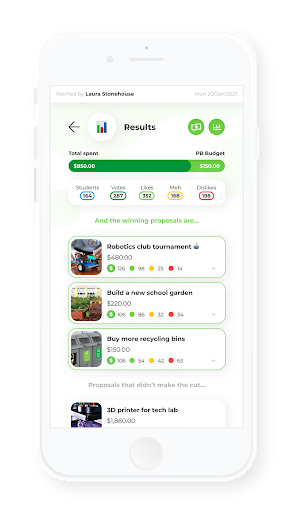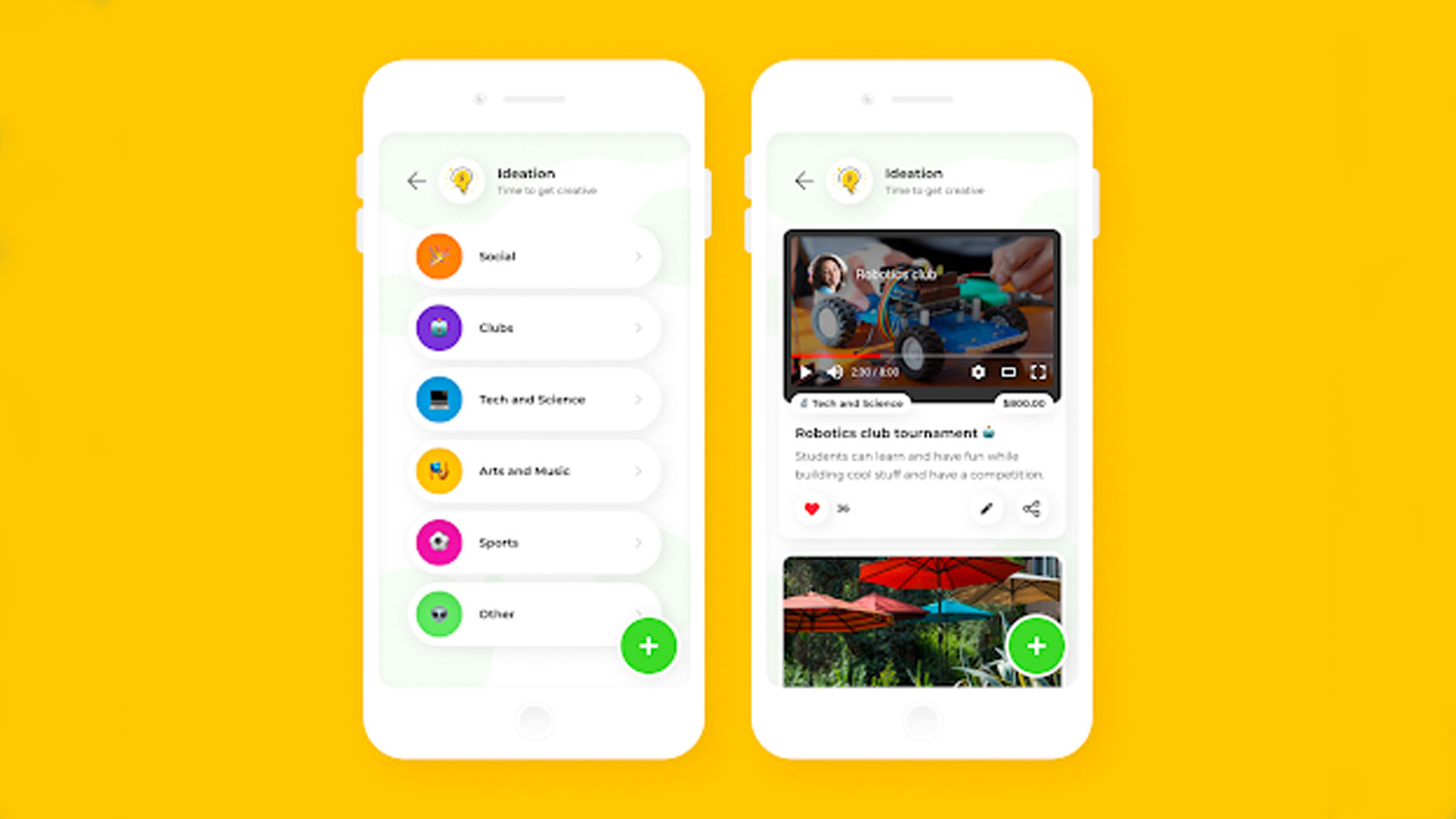Thus far in this series, we’ve been looking at the foundation layers of the edtech stack. Today we shift our focus to an interesting new solution for the curriculum space.
Introduction
Can you remember your school or team doing a fundraiser to pay for some initiative in the school? Like, new playground equipment or band uniforms? Maybe you sold fundraiser chocolate door to door in your neighborhood, and there was a final convocation in the gym where the most successful student won a Nintendo or a bicycle. By sixth grade at Parkside Elementary School, I remember the same classmate winning every time, but none of the consolation prizes, let alone what we were raising money for. What I know now is that my 11-year-old mind didn’t have any connection to the cause because it wasn’t my choice. I didn’t have any say in what was important enough to launch a fundraiser to pay for some improvement to our school, and those efforts always felt like more work — even punishment if I had a certain amount I was responsible for. While reflecting on that, it occurred to me Principal Dilk was giving pre-teens a sales quota. This all came back to mind when I crossed paths with Luke Hohmann, a brilliant thinker, software developer, and expert on the topic of “participatory budgeting.” Participatory Budgeting, or “PB” for short, is an egalitarian approach to enabling a group of people to identify a need and solve specific problems through design thinking that benefit the most. Luke’s latest project, FirstRoot, is a standards-aligned, learner-centered financial literacy and civics platform for schools to easily implement participatory budgeting to have an impact on campus, community, and beyond. Let’s take a look at how this works.

Participatory budgeting with FirstRoot
FirstRoot’s learning experience is founded on cues from modern pedagogy. The five-part process of setting up a PB cycle with FirstRoot starts with a design-thinking process, building an empathetic disposition in students to align their ideation with how they can most equitably help others. Once there’s consensus around a common theme, students use FirstRoot to create proposals, complete with benefits and estimated budgets for accomplishing the solution and solving a specific problem that affects the school, community, or world. The proposal process is rigorous and demands critical thinking from students knowing their proposal will be competing with those of peers for the allocated funding.  As students finish the proposal phase, they post them in the platform for their peers to review and cast votes. The most popular proposals receive funding ranging on average from $2,000 to $10,000, and then the joy and engagement ramp up. There are three common sources for funding a PB proposal’s budget:
As students finish the proposal phase, they post them in the platform for their peers to review and cast votes. The most popular proposals receive funding ranging on average from $2,000 to $10,000, and then the joy and engagement ramp up. There are three common sources for funding a PB proposal’s budget:
- Principal discretionary funds, such as ESSER funds.
- PTA / PTO grants
- Sponsors:
- Philanthropic sponsors, such as Rotary
- Corporate Social Responsibility (CSR) program sponsors, such as Salesforce or Advisors Excel or Microsoft (and other companies that match employee donations)
- In certain circumstances, and as funds allow, the FirstRoot School Fund, which is their CSR program
Students get to rally around winning proposals and steward the budget towards their solution designs where they learn (or apply) the principles of project-based learning as they implement their ideas. One thing I appreciate about the design of FirstRoot is how much agency it gives the users—both educators and students. It may be a smart business decision for a developer to work stridently in their design to reduce customer service calls. However it’s rare in edtech to have that level of design expertise. However, intuitive design that keeps learning moving forward aligns with our values as modern educators to give more voice and choice to students in designing the entirety of the process. Another point of interest is that FirstRoot can scale from one class to an entire school. This means one classroom teacher can incorporate FirstRoot in her planning and run a PB cycle project with a single roster, or an administrator can support launching FirstRoot campuswide for an entire semester of community-oriented action and a bigger impact. In fact, Hohmann’s team have established an ambitious range of outcomes for schools using FirstRoot to approach the United Nations Sustainable Development Goals to empower students to participate in the most egregious issues facing our global community. What makes this a realistic expectation of the company is the elegance of the entire user experience. The user interface is intuitive and appealing for both educators and learners alike. This prevents the sort of stalling out that can occur when our focus drifts from the work to the tool, a value we may not always recognize. The way that Hohmann and his team have accomplished this is not only through expert design of their user interface, but also through the supplemental materials. The FirstRoot team doesn’t presume that any users (whether teachers, students, or included mentors and subject matter experts) know the tenets of design thinking, participatory budgeting, or financial literacy. This makes having an impact significantly more accessible. They have produced copious amounts of curricular content, documentation, and short videos that can expedite the adoption of not just the software, but the entire approach in an extremely generous manner. All together, the FirstRoot experience is an empowering one for teachers and students to grasp financial literacy concepts, apply them through civic engagement and do so while learning design and project management skills that positively impact their schools and neighborhoods.
What students and teachers think
Shana Cash of Purdue Polytechnic High School (PPHS) in Indianapolis has been Indiana’s FirstRoot pioneer. Her students started with a PB cycle to improve the experience at PPHS. The goal was to grow and optimize the emerging public charter school network as more PPHS campuses are added around Indiana. More recently, her students used FirstRoot to do a PB cycle to innovate wellness solutions offered to students. Since Cash introduced PB to her students, they’ve invested in a new library for their school, built a pergola, and purchased sports gear. They’ve even used PB to advocate for playing music during passing periods, and launch a dance club. Shana noted that PPHS places an emphasis on design thinking in their application of PB. As Shana states, “It has been so wonderful to see the students’ enthusiasm for the opportunity to improve their school while exploring design thinking! They are grappling with the real-world challenges of digging into the costs and logistics of project proposals to evaluate their feasibility.” With the start of the ‘21-’22 school year, FirstRoot is attempting something larger, working with a design team at Purdue University to implement an outcome-based tracking feature so students can assess the impact of their proposals. Cash is also working with FirstRoot on continuing to raise awareness in other schools so as many students as possible participate and have an even bigger impact.
“It has been so wonderful to see the students’ enthusiasm for the opportunity to improve their school while exploring design thinking!”– Shana Cash, Teacher
Looking ahead
During the pandemic, FirstRoot released their Civics content into the platform to knit together interdisciplinary learning with the social studies department. What’s not as apparent to end users is the extremely high standards Hohmann has for FirstRoot. Diversity, equity, access, and inclusion (DEAI) are fundamental values of the company, and it’s backed up in the code. FirstRoot’s engineers have worked behind the scenes to make sure the platform is as accessible as possible to account for disabilities as well as non-English speaking staff and students, all while adhering to student data privacy rights to protect the learning community while engaging online in their projects. Hohmann says “Participatory Budgeting, as a process, is founded on DEAI principles. We’ve used these values to ensure that our engineers have created a platform accessible to all”.
Conclusion
With really thoughtful developers like Luke and his team at FirstRoot, schools have a means to open the doors to real-world learning with real dollars to make a real impact. In short, it comes mighty close to eliminating the adage of, “I wish they would’ve taught us that in high school!” And FirstRoot can definitely eliminate our old disconnected fundraisers by giving students the ownership of the whole process.
Resources
Please login or register to claim PGPs.
Alternatively, you may use the PGP Request Form if you prefer to not register an account.



